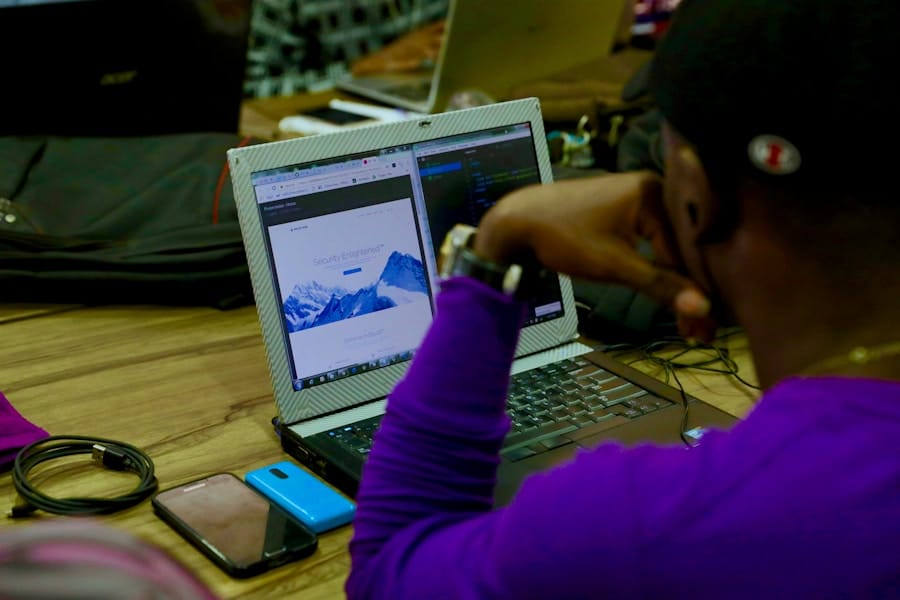The emergence of virtual schools marks a significant shift in the educational landscape, driven by technological advancements and changing societal needs. Initially, online education was a niche market, primarily catering to adult learners seeking flexibility in their studies. However, the advent of high-speed internet and the proliferation of digital devices have transformed this niche into a mainstream educational option for students of all ages.
The COVID-19 pandemic acted as a catalyst, propelling virtual schools into the spotlight as traditional educational institutions were forced to adapt to remote learning environments.
As a result, many school districts and educational organizations began to establish fully online programs, offering a range of curricula that mirror traditional schooling.
Virtual schools now serve millions of students worldwide, providing them with access to diverse educational resources and opportunities that may not be available in their local communities. The rise of virtual schools has also prompted discussions about the future of education, as educators and policymakers explore how to integrate technology into teaching and learning effectively. This evolution raises important questions about the role of physical classrooms and the potential for virtual education to enhance or replace traditional methods.
Key Takeaways
- Virtual schools have seen a significant rise in popularity, offering an alternative to traditional in-person education.
- Overcoming barriers to education access, such as geographical limitations and physical disabilities, is a key advantage of virtual learning.
- Virtual learning offers advantages such as flexibility and personalized learning, but also presents challenges like lack of social interaction and potential for distractions.
- Virtual schools have the potential to positively impact underprivileged communities by providing access to quality education and resources.
- Technology plays a crucial role in virtual education, enabling interactive learning experiences and global expansion of virtual schooling.
Overcoming Barriers to Education Access
Virtual schools have revolutionized the way we access education, breaking down traditional barriers to provide quality education to all.
### Overcoming Geographic Limitations
Geographic limitations have long hindered students in rural or underserved areas from receiving quality education. Virtual schools break down these barriers by providing access to high-quality instructional materials and experienced educators regardless of a student’s location. For instance, a student living in a remote area can participate in advanced placement courses or specialized programs that may not be offered at their local school. This democratization of education allows students from diverse backgrounds to pursue their academic interests and aspirations.
### Catering to Diverse Needs
Virtual schools can cater to students with varying needs, including those with disabilities or health issues that make attending a physical school challenging. Online learning platforms often incorporate adaptive technologies that personalize the learning experience, allowing students to progress at their own pace. This flexibility is particularly beneficial for students who may require additional time to grasp complex concepts or those who thrive in non-traditional learning environments.
### Promoting Educational Equity
By addressing these barriers, virtual schools play a crucial role in promoting educational equity and ensuring that all students have the opportunity to succeed.
Advantages and Challenges of Virtual Learning

Virtual learning offers numerous advantages that appeal to both students and educators. One of the most notable benefits is the flexibility it provides. Students can tailor their learning schedules to fit their individual needs, allowing them to balance academic responsibilities with extracurricular activities or part-time jobs.
This flexibility can lead to increased motivation and engagement, as students take ownership of their learning journey. Additionally, virtual schools often utilize a variety of multimedia resources, such as videos, interactive simulations, and gamified learning experiences, which can enhance student engagement and comprehension. However, despite these advantages, virtual learning also presents several challenges that must be addressed for it to be effective.
One significant concern is the lack of face-to-face interaction between students and teachers, which can hinder the development of social skills and collaborative learning experiences. While many virtual platforms incorporate discussion forums and video conferencing tools to facilitate communication, these methods may not fully replicate the dynamic interactions found in traditional classrooms. Furthermore, the reliance on technology can exacerbate existing inequalities; students without reliable internet access or appropriate devices may struggle to participate fully in virtual learning environments.
The Impact of Virtual Schools on Underprivileged Communities
Virtual schools have the potential to significantly impact underprivileged communities by providing access to quality education that may otherwise be unavailable. In many low-income areas, public schools face challenges such as overcrowded classrooms, limited resources, and underqualified teachers. Virtual schools can alleviate some of these issues by offering a wider range of educational opportunities and resources that are not constrained by local funding limitations.
For example, students in underfunded districts can access advanced coursework or specialized programs through virtual platforms, leveling the playing field for those who might otherwise be left behind. Moreover, virtual schools can foster a sense of community among students from diverse backgrounds. Online learning environments often bring together individuals from various geographic locations and cultural contexts, promoting cross-cultural understanding and collaboration.
This exposure can enrich students’ educational experiences and prepare them for an increasingly interconnected world. However, it is essential for virtual schools to implement strategies that actively engage underprivileged students and address their unique challenges, such as providing mentorship programs or additional support services to ensure they thrive in an online learning environment.
The Role of Technology in Virtual Education
Technology serves as the backbone of virtual education, enabling innovative teaching methods and enhancing the overall learning experience. Learning management systems (LMS) play a crucial role in organizing course materials, tracking student progress, and facilitating communication between educators and learners. These platforms often incorporate features such as quizzes, discussion boards, and multimedia content that cater to various learning styles.
Additionally, advancements in artificial intelligence (AI) are beginning to shape virtual education by providing personalized learning experiences tailored to individual student needs.
Educators can utilize data analytics to monitor student performance in real-time, allowing them to identify areas where students may be struggling and adjust their instructional strategies accordingly.
Furthermore, technology enables the creation of immersive learning experiences through virtual reality (VR) and augmented reality (AR), which can transport students to different environments or historical contexts without leaving their homes. As technology continues to evolve, its role in virtual education will likely expand, offering even more innovative solutions for teaching and learning.
Global Expansion of Virtual Schooling

The global expansion of virtual schooling reflects a growing recognition of its potential to address educational disparities across different regions. Countries around the world are increasingly adopting online education models as a means to enhance access to quality instruction for all students. For instance, nations like India have launched initiatives aimed at providing digital education resources to rural areas where traditional schooling options are limited.
Similarly, countries in Africa are leveraging mobile technology to deliver educational content to remote communities, bridging gaps in access and improving literacy rates. This global trend is not without its challenges; varying levels of technological infrastructure and internet connectivity can hinder the effectiveness of virtual schooling in certain regions. In many developing countries, inconsistent electricity supply and limited access to devices pose significant obstacles for students seeking online education.
However, innovative solutions are emerging to address these issues. For example, some organizations are developing offline educational resources that can be accessed without an internet connection or utilizing solar-powered devices to facilitate learning in areas with unreliable power sources. As these initiatives gain traction, they contribute to a more equitable global education landscape.
Virtual Schools and Personalized Learning
Personalized learning is one of the most compelling aspects of virtual schooling, allowing educators to tailor instruction based on individual student needs and preferences. In traditional classrooms, teachers often face challenges in addressing the diverse learning styles and paces of their students due to time constraints and large class sizes. Virtual schools offer a solution by enabling differentiated instruction through adaptive learning technologies that adjust content based on student performance.
For instance, platforms like Khan Academy utilize algorithms that assess a student’s understanding of specific concepts and provide customized exercises accordingly. This approach empowers learners to progress at their own pace, ensuring they master foundational skills before moving on to more complex topics. Additionally, personalized learning fosters greater student autonomy; learners can set goals for themselves and take charge of their educational journey.
This shift towards individualized instruction not only enhances academic outcomes but also cultivates essential skills such as self-regulation and critical thinking.
The Future of Education: Virtual Schools and Beyond
As we look toward the future of education, it is clear that virtual schools will play an increasingly prominent role in shaping how we teach and learn. The ongoing integration of technology into educational practices suggests that hybrid models—combining both online and face-to-face instruction—will become more prevalent. This approach allows educators to leverage the strengths of both modalities while addressing some of the challenges associated with each.
Moreover, as society continues to evolve in response to technological advancements, so too will our understanding of what constitutes effective education. The future may see an emphasis on skills such as creativity, collaboration, and digital literacy—competencies that are essential for success in an interconnected world. Virtual schools will need to adapt their curricula accordingly, ensuring that they prepare students not only for academic achievement but also for lifelong learning in an ever-changing landscape.
In conclusion, while virtual schools have already made significant strides in transforming education access and delivery, their potential is far from fully realized. Ongoing research into best practices for online teaching and learning will be crucial as educators seek to refine their approaches and maximize student outcomes. As we navigate this new frontier in education, it is essential that we remain committed to equity and inclusivity, ensuring that all learners have the opportunity to thrive in a digital age.
Virtual schools have been instrumental in expanding education access globally, allowing students to learn from anywhere with an internet connection. This shift towards online learning has been further facilitated by advancements in technology, such as VPS hosting providers like those highlighted in this article. Additionally, devices like the Samsung Galaxy Chromebook, as discussed in this article, have made it easier for students to engage in virtual learning. Parents looking to equip their children with the necessary tools for online education can also benefit from resources like this article, which offers guidance on selecting a suitable smartphone for educational purposes.
FAQs
What are virtual schools?
Virtual schools are educational institutions that offer online courses and instruction to students. These schools provide a flexible and accessible alternative to traditional brick-and-mortar schools.
How are virtual schools transforming education access globally?
Virtual schools are transforming education access globally by providing opportunities for students to access high-quality education regardless of their geographical location. They are breaking down barriers to education by offering flexible schedules, personalized learning experiences, and access to a wide range of courses and resources.
What are the benefits of virtual schools?
Some of the benefits of virtual schools include flexibility in scheduling, personalized learning experiences, access to a wide range of courses and resources, and the ability to accommodate diverse learning styles and needs. Virtual schools also provide opportunities for students to develop digital literacy and 21st-century skills.
What are the challenges of virtual schools?
Challenges of virtual schools include the need for reliable internet access and technology, the potential for social isolation, and the importance of ensuring the quality of online instruction and student engagement. Additionally, virtual schools may face regulatory and accreditation challenges in some regions.
How do virtual schools impact traditional education systems?
Virtual schools are impacting traditional education systems by providing an alternative to traditional brick-and-mortar schools. They are prompting traditional schools to adapt and incorporate online learning opportunities, as well as to consider new approaches to personalized and flexible learning.

